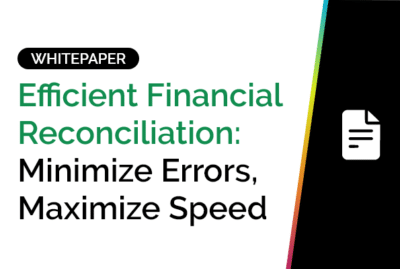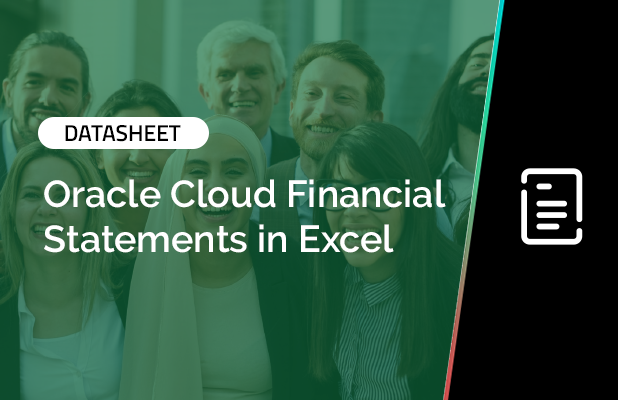- Blog Article
The New Finance Stack for Empowered Finance Teams: Secure, Smart, and Built for Speed
Explore –
The Hidden Risk of Unsecured AI Tools in Financial Environments
Why Performance Still Matters in the Age of Smart Tech
Legacy Tools Slow Down Decision-Making
GLConnect: Secure, Scalable, Real-Time. No Gimmicks!
Trusted by Fortune 500 Teams That Care About Compliance
Ready for a Reporting Stack That’s Smart – and Safe?
ChatGPT changed the way people work – overnight.
From analysts to accountants, users are already plugging financial data into publicly available, often free AI tools to “explain this number,” “summarize that forecast,” or “build a pivot table formula.”
It’s fast, intuitive, and tempting – especially when traditional reporting tools feel clunky and outdated.
There’s the catch. Even if your team isn’t formally using AI in finance, they’re already experimenting with it.
And that introduces a new kind of risk: your company’s financial data may be exposed to unsecured, external platforms – without you even knowing it.
In this blog, we unpack how finance teams can evolve safely and smartly, using solutions that offer speed and intelligence without compromising security, control, or compliance.
The Hidden Risk of Unsecured AI Tools in Financial Environments
Nobody’s intentionally leaking sensitive data. But the risk today isn’t malice – it’s convenience.
A senior analyst pastes trial balance data into ChatGPT to get a faster variance summary.
An FP&A intern uploads a CSV to an AI email generator to draft a report for the CFO.
A controller shares a P&L screenshot with a browser extension that claims to “make Excel easier.”
Suddenly, your financial data has left the building.
With no control over where that data is stored, who can access it, or how it’s used to train public AI models, the security risk is real – and growing. And in regulated industries like BFSI or government, it’s not just risky. It’s non-compliant. In fact, it’s for this reason that 60% of CFOs report that their approach to managing AI is either ad hoc or non-existent due to concerns around data privacy and cybersecurity.
But you also can’t outright ban what’s making your finance teams’ lives easier.
What you need is a finance stack that makes risky workarounds unnecessary.
Why Performance Still Matters in the Age of Smart Tech
Because speed rules.
No CFO wants to hear, “The system is refreshing” when the board needs an urgent view. No controller wants to wait 30 minutes to drill into a subledger discrepancy. No finance ops leader wants reporting to stall a month-end close.
And yet, this is the status quo with many legacy reporting tools.
Reporting workflows can overload Oracle. They can cause lag. They time out.
And ironically, that’s what drives users to public AI tools in the first place. All they’re looking for is to find the right answers, fast.
Modern reporting solutions need to meet that expectation without cutting corners on governance or data integrity.
Legacy Tools Slow Down Decision-Making
Legacy tools were built for static environments, not for hybrid systems, cloud transitions, or real-time expectations.
They require IT support for custom reports.
They can’t handle cross-platform reporting across Oracle EBS and Fusion Cloud.
They struggle to support the drill-down workflows analysts need to explore variances on their own.
And when every report becomes a project, and every change request goes into an IT backlog, decision-making slows to a crawl.
Finance teams today need reporting solutions that:
- Integrate with live ERP data
- Work directly in Excel (where they already are)
- Enable secure self-service, without compromising speed
That’s where GLConnect comes in.
GLConnect: Secure, Scalable, Real-Time. No Gimmicks!
GLConnect is not an AI tool that promises to “predict your cash flow” using black-box algorithms.
It’s a secure, Excel-native reporting solution that connects directly to Oracle EBS and Fusion Cloud – and puts control back in the hands of finance professionals.
Here’s how GLConnect supports a modern, secure finance stack:
- No data leaves your environment. Everything lives inside Excel, pulled directly from ERP in near real time.
- Role-based access keeps sensitive data safe, while enabling collaboration.
- Drill-down clarity, customizable reporting, and audit-ready outputs.
- Scales with your team. Whether you’re running hybrid environments or transitioning to the cloud, GLConnect supports both.
- Optimized performance. Reports refresh fast without putting load on your Oracle database.
GLConnect gives your team everything they like about smart solutions – speed, ease, independence. All without the security and compliance nightmares that come with generic AI platforms.
Trusted by Fortune 500 Teams That Care About Compliance
GLConnect is trusted by some of the largest enterprises in the world – including finance teams that operate with zero room for risk.
Whether it’s for:
- Public sector teams like Pinellas County needing transaction-level transparency
- Enterprises managing hybrid reporting across Oracle EBS and Fusion Cloud
- Global firms preparing for audits with real-time drill-down reports
GLConnect delivers. Every time.
It’s built for what today’s finance teams really need: security, speed, clarity, and control.
Ready for a Reporting Stack That’s Smart – and Safe?
Your finance team deserves solutions that are secure yet fast by design, not patched for compliance and speed after the fact. GLConnect keeps your financial data where it belongs – inside your walls, in your control, and ready to work with:- Secure, role-based access
- Real-time reporting in Excel
- Built for hybrid Oracle environments
- Trusted by enterprises that can’t afford to gamble on privacy and security










